About cables
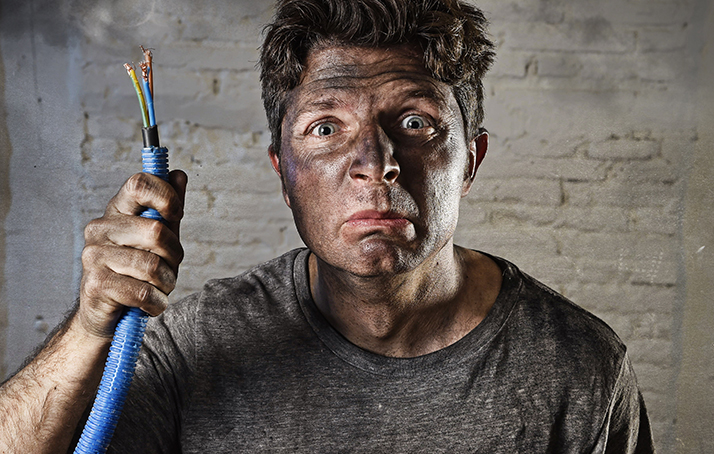
Is it the cable?
Even if the musician, his instrument, the loudspeaker and the lighting system are completely perfect and you still have a bad transmission... Could it really be that it's your cable? It can!
Like many musicians, we took our first musical steps in the small home studio or in the village combo and were already surprised at the result when we replaced the low budget jack plugs on the analog synth with decent metal plugs. Hum away, crack away. Or if you replaced the bell wire with a proper guitar cable... where do all the crystal clear highs and the "crispe sound" suddenly come from?
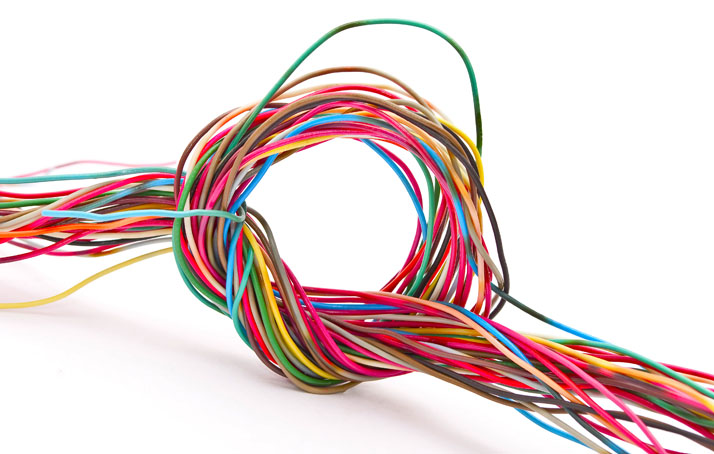
Why do cables twist?
During the production process, almost every multiwire cable in the audio and video sector is submitted to a stranding or laying direction to give the cable its compactness and bending properties. Multiwire cables are most often stranded in multiple layers.
Highly flexible cables are subject to an increased torsion strain, which will often take the stranded compound to its breaking limits. For technical reasons the stranding elements in the stranding layers are of different lengths and thus, of course, also subject to different strains, which is why in some multiwire cables the inner elements (such as the contact points at the connectors) will often tear first. A wire bundling would be ideal, which is, however, not possible in certain cases (e.g., with 4- or 8-wire speaker cables), because the cables would become too thick and too cumbersome then.
If the cable is forced into an unnatural position by an extreme or reverse bend and at the same time exposed to tensile forces, the individual wires may ”jump“ out of their guides and cannot slide back any more. The result is a formation of knots or cable twisting. Gluing cables together with other cables is not recommended either, because a ”jam“ can occur just as easily in this constellation, since the wires within the stranded bundle cannot relax.
Some cable makers think they can avoid the problem by simply injecting a thicker outer jacket in the extrusion process as a means of protection for the inner elements – provided the overall diameter allows it. But this will only shift the problem into the cable interior, because instead of the overall construction the individual wires will now twist and tear.
SOMMER CABLE has employed a new, zero torsion stranding method (X-Torsion) for quite some time which handles this problem very well. Yet the case of improper handling the formation of knots cannot be avoided completely. Please make sure to relax cables prior to reeling or to lay them out full length before reeling them onto a cable drum.
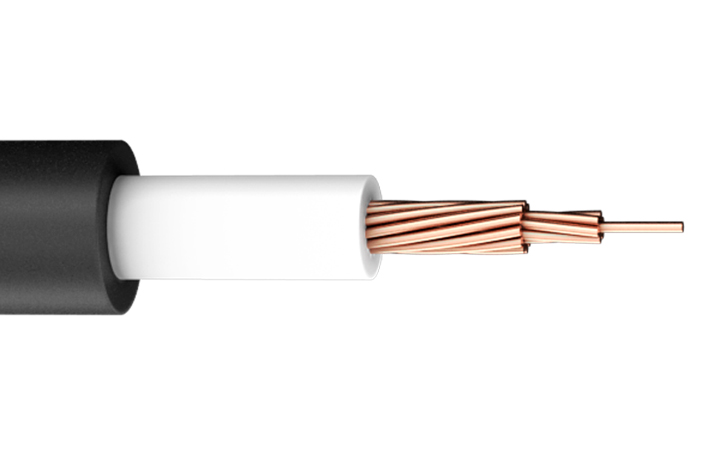
Does the optimum guitar cable length only depend on the cable values?
It is not easy to answer this question, because not only a low capacity is important for the sound of a guitar cable, but the entire cable construction must be considered.
A guitar cable can have an extremely low capacitive value and still sound “faint“ or flat This often is the case if the individual litz is stranded parallel instead of concentric (as is the case e.g. at
SOMMER CABLE). Parallel stranded litz not only have too small a conductive surface, but also breaks real fast. Too small a conductive surface is even noticeable on a bass cable: It transmits the typical deep sounds, but will be missing the all important “attack“ and the dynamics.
The insulation material on guitar cables with an almost unbelievably low capacitive values is often very highly foamed. But highly foamed insulation material is very sensitive to pressure and looses stability after having been wound only a few times (i.e. after each gig). The capacitive values thus increase. To avoid this effect,
SOMMER CABLE uses an especially robust and lacquered insulation material to finish off porous surfaces.
Cable manufacturers have to find a compromise between good electrical values and continuous stability for insulation and jacket.
If merely the capacity is considered, the cable would have to be 30 cm long, which would not be very practical. The solution: Testing the sound or sound characteristics of different cables and selecting the shortest available cable length for the selected version (mostly 3.0 m or 4.5 m) – just to be on the safe side.
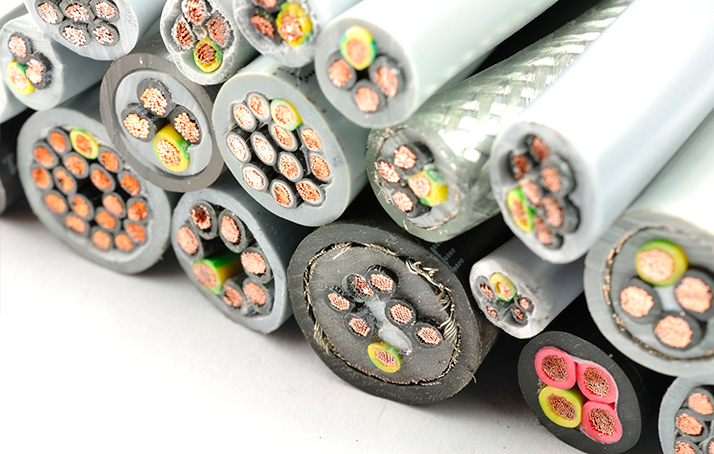
What’s the difference between diameter and cross-section?
The diameter in mm is a linear measure, the crosssection in mm² is an area measure.
For solid conductors and single wires the diameter is specified in mm. For inner conductors, which consist of multiple single wires/braided wires, we quote the cross-section.
The cross-section (A) can be calculated from the diameter (d) using the following formula:
A = (d² x Pi)/4 ≈ 0.785 x d²
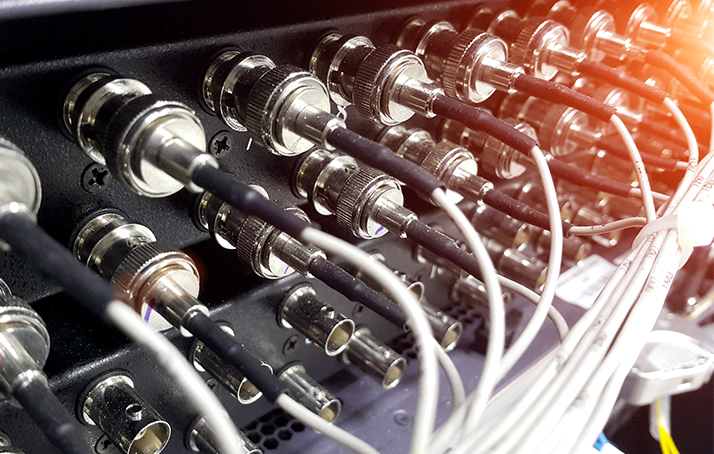
What is the maximum transmission length of HD-SDI and UHD cables?
That's hard to say, because it very much depends on the peripherals used and the quality of the interface installed. The question is comparable to one you would ask the filling station attendant: If I fill 10 liters of gasoline into my car, how far can I drive? The answer to the question would depend on the type of vehicle, and the same it true for HD-SDI/6G/12G cables. Here too, the hardware data must be considered and used to calculate the transmission length. An SDI-cable should be capable of transmitting 270 Mbit/sec., the HD-SDI-cable is designed to transmit within a range of 1.5 Gbit (SMPTE 292M). The range of the HD-SDI depends on the bitrate used (compressed or not compressed). At 1.485 Gb/s (not compressed), the damping value is drawn on at half the bit rate (720 MHz) and the cable length possible at a damping value of 20 dB or 30 dB is considered relevant parameter. UHDTV applications operate at a multiple bit rate, e.g. with 3 Gb/s (SMPTE 425M), 6 Gb/s (SMPTE 2081) and 12 Gb/s (SMPTE 2082). For the latter two, 40 dB @ 3000 MHz and 40 dB @ 6000 MHz respectively apply. Each connector is an attenuator and each assembly increases the attenuation value.
Download overview transmission lengths of our HD-SDI/UHD cables
Please note that the electrical values (attenuation, capacitance, etc.) in a multicoax or hybrid video cable can deviate by around 10 - 15 % from the measured values of a single cable. Due to the tight strand lay, single cables in multicoax or hybrid cables are longer.

Are all shiny things made of gold?
Or: How important is the gold-plated contact on a plug connector really? But let if first be mentioned: Pins made of genuine gold would not only be too expensive, but would also not make any real technical sense. Gold is a heavy metal and would, without an alloy treatment, break after only a few plug cycles. To affect hardness and surface properties, mostly nickel-plated pins or alloys are used. Most plug connectors are only lightly goldplated and reasonably priced ones are sometimes only painted, which means that a real cheap plug connector cannot be gold-plated. The good conductive values of gold can only be utilized if both socket and plug are gold-plated. If this is not the case the harder alloy simply scrapes off the soft gold and oxides build up. Contrary to public opinion the layperson cannot recognize the quality of the gold by the colour, because very often, depending on application and plug cycles, more complex alloys are used on the plug connectors.
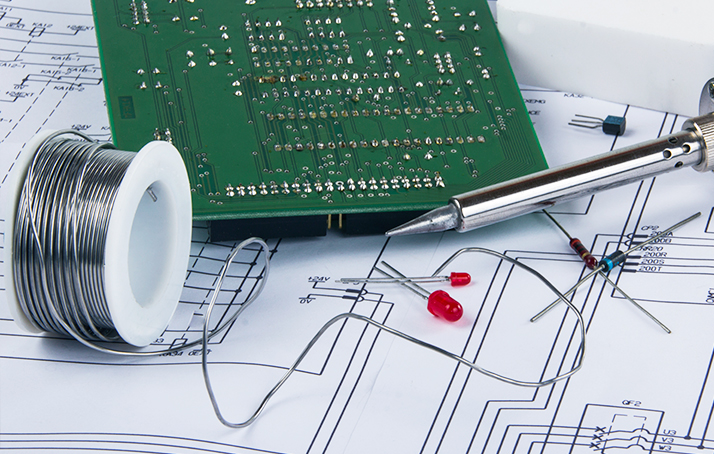
How important is the quality of the solder?
The quality of the solder and especially the workmanship of the soldered spots should not be underestimated for the transmission of audio signals. Bad solder or a soiled solder bath can cause the transmission resistances to increase. This is not only physically detectable, but in rare cases it can also be heard. So, use high quality solder to work with (partially with silver), make sure to provide a clean working environment and do not touch the wire insulation with the solder tip.
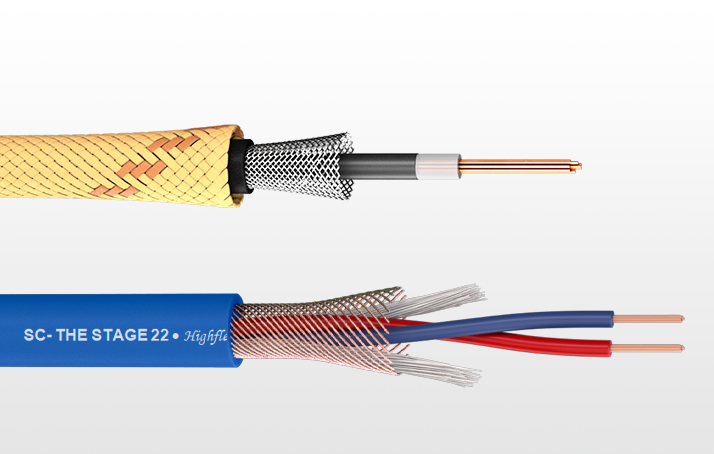
What is the difference between an unbalanced and a balanced cable?
The unbalanced cable is mostly used to connect guitars and amplifiers, HiFi-components or as a simple control cable. It consists of a signal wire and shielding.
The balanced cable has two signal wires with a phase twisted by 180° (±). The opposite phase releases interference signals, which is why this type of cable is preferred for long transmission distances or sensitive, interference-prone components such as microphones and mixing boards, etc.
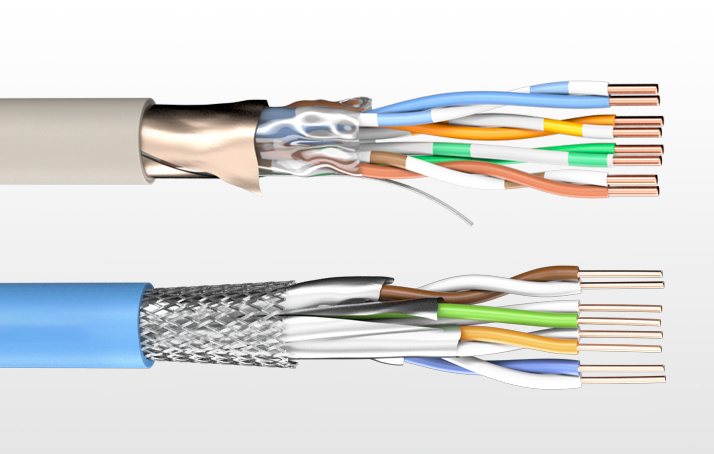
What is the difference between a CAT.5, CAT.6, CAT.7 and CAT.8 cable?
The simple CAT.5 standard was designed for 100 Mbps LANs and was established around 1990. This standard - as is common in fast-changing world of computer technology - soon reached its limits and was replaced by the CAT.5e standard, which supports the operation of full-duplex Fast Ethernet and Gigabit Ethernet. Like its bigger brother CAT.5e, CAT.5 is a 100 MHz standard.
In June of 2002, the CAT.6 standard was ratified by TIA/EIA, with a significantly higher performance than the CAT.5e standard and a transmission capacity of 250 MHz. Of course, all CAT.6 components are downward compatible to CAT.5e components. CAT.7 cable is designed for data transmission up to 600 MHz and CAT.7a up to 1000 MHz. It is favored for use in buildings, because the wire pairs are individually shielded, with very low cross-talk.
CAT.8.1 has a transmission frequency of 2000 MHz and a data rate of up to 40 Gbit/s for high-speed networks and high-performance connections between modern servers, routers and switches.
The new, higher classifications are always downwards compatible with the older standards.
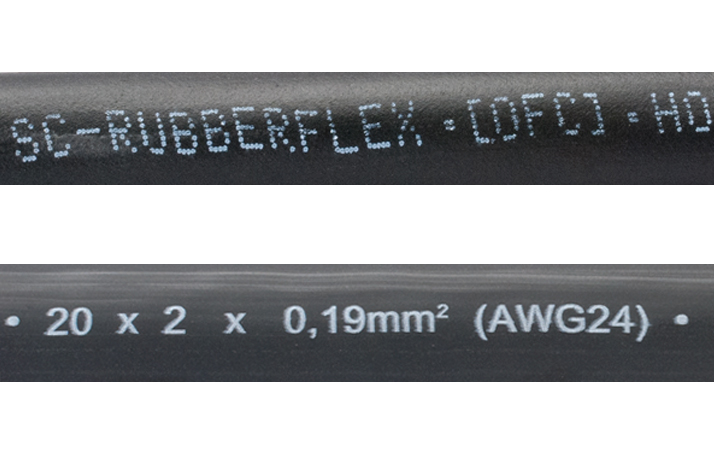
Can I also have my cable with a personal overprint?
There are indeed several options to have your SOMMER CABLE
product personalised! As a reaction to the dwindling cable stocks e.g. in the event technology sector, many companies have their cables overprinted.
This can be done either with an inkjet printer or a printing wheel from a certain quantity. The inkjet overprint is free of charge, whereas an overprint with a printing wheel is not exactly a low-budget affair, but offers some benefits. In general it is somewhat cleaner and more precise, and complex company logos or small graphics can be incorporated. Of course, the printing wheel – as long as it has been universally designed – may also be used for other cables.
Normally, the colour of the overprint is white or, with brighter coloured cables, also black. Unfortunately our cables cannot be overprinted later, but only directly during our bulkware production. Therefore we require a minimum quantity for special printing jobs. lease enquire about the purchase quantity and the printing wheel costs at info@sommercable.com.
By the way, many premade SOMMER cables are already fitted with a transparent shrink-on tube under which a written paper strip can be slid subsequently. For a small premium we can also personalise connectors or cable breakouts. Thus we can laser your company name or e.g. a reference to a company anniversary or a dedication on our TriCone jack plug housings.
SOMMER CABLE has a highly professional laser facility which can also be used to label metal parts (e.g. 19“ panels or compact stageboxes).

Rodent protection
Rodents are notoriously attracted to cables with ordinary PVC sheaths due to the sweet-smelling plasticizers in the material. This attraction can lead to significant problems when an electrical installation blocks a passageway that rodents have previously used. Unwilling to take a detour, rats will often chew through the cables, causing economic damage, increasing maintenance needs, and posing serious safety risks, particularly with live cables or safety technology connections. Consequently, there is a high demand for rodent-repellent cables or those that significantly deter these pests.
However, achieving effective rodent protection is challenging due to varying global conditions and the lack of universal approval standards. Steel sheathing offers robust protection but is impractical for most installations. Therefore, the goal is to make it as difficult as possible for rodents to damage the cables.
Our AQUA MARINEX cable series addresses this issue with a multi-faceted approach. The sheath is made of a virtually odorless, extremely tough PUR material, specially developed for this purpose. Beneath the sheath, we have incorporated a net of aramid fibers, which rodents find particularly frustrating. Additionally, the cables have a diameter that is difficult for rodents to grip, and the smooth surface further deters biting compared to conventional PVC cables.
The AQUA ARAMID cable is also transversely waterproof. Its special fleece layer naturally seals the surface, providing protection not only from water but also from contaminants like urine and saliva. This comprehensive design ensures that the cables are highly resistant to rodent damage, offering a reliable and durable solution for electrical installations.
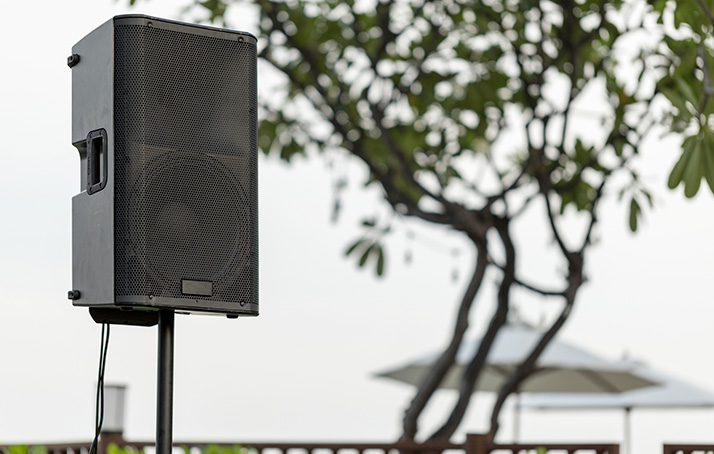
Outdoor Cable Installation
Good Inside, Bad Outside?
Customers and media planners often struggle to determine which cable is suitable for outdoor installation. It is important to distinguish whether the cable is to be laid permanently, such as for a surveillance camera, or only temporarily, such as speaker cables for a sound system at a Christmas market.
For temporary applications at outdoor temperatures of up to -10°C (SOMMER cable S-PVC up to -30°C), a cable with a PVC jacket is usually sufficient. However, the outer jacket should be black or contain an additive to protect the cable from UV rays.
For maximum reliability, consider our transversely watertight cables from the AQUA series. These cables feature a "water-blocking tape" that prevents moisture from creeping up the screen or conductor. The UV-resistant jacket, made of special PUR, protects the inner components even under the most adverse conditions.
Using cables with a standard FRNC outer jacket is not advisable, as this jacket easily absorbs moisture and is usually not resistant to microbes and UV rays. If flame resistance is required, we recommend using cables made of halogen-free and flame-retardant Soft-PUR.
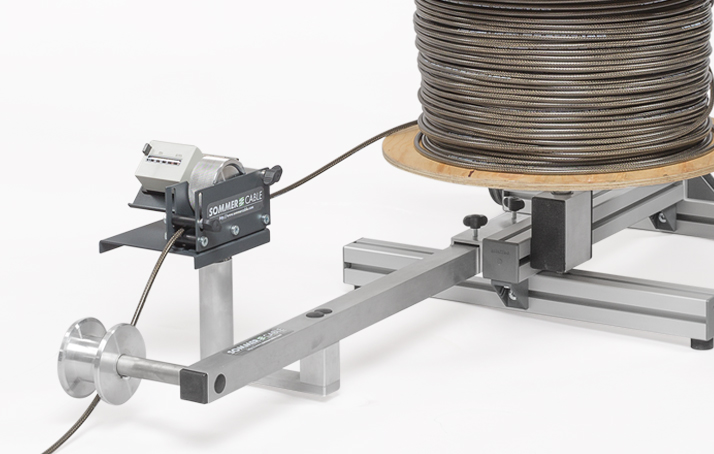
Standard market cutting tolerances
Please note that cables are rewound onto the corresponding XLPE drum units or rings and cut to length after production of large production pulse systems. The lengths here have permissible tolerances of +/- 3%, as the rewinding process is carried out on very powerful, calibrated machines, which cause natural slippage due to the high speeds and vibrations of the cable.
